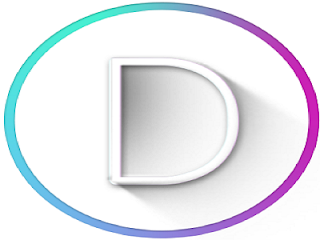Zigma 8
https://zigma8.com/brand-launch-in-iran-8-steps-of-digital-marketing-activities/
Top
Marketing Agency In Iran
Rules and Regulations of E-commerce Advertising and
Marketing in Iran
Before running a new business in Iran, especially the ones
related to e-commerce, it requires a vast and thorough notion of the rules and
regulations of e-commerce advertising and marketing in Iran in this regard.
Iran, in its own way, is quite different from other countries due to the nature
of its constitution and its business regulations. To be successful in such a market
without encountering any potential problems, you need to be aware of the
regulations of e-commerce advertising and marketing. Below we have listed the
necessary rules and notes any business must know in Iran (according to the law
which was ratified in 2004):
General Provisions
This Law consists of a set of rules and principles to be
applied for easy and secure communication of information in electronic
intermediaries using state-of-the-art communication systems.
- “Data Message”: Any
representation of facts, information, and concepts generated, sent,
received, stored, or processed by use of electronic, optical, or other
information technology means.
- “Originator”: The
original source of “data message” by whom, or on whose behalf, the “data
message” has been generated or sent but it does not include a person
acting as an intermediary with respect to that “data message”.
- “Addressee”: The
person intended by the originator to receive the “data message”, but it
does not include a person acting as an intermediary with respect to that
“data message”.
- “Incorporation
by Reference”: refers to a source outside the
“data message”; which in case of its compliance with Article 18 of this
Law, is deemed to be part of that “data message”.
- “Integrity”: The
“data message” in its entirety and with no change. System management such
as sending, receiving, storing, or displaying data doesn’t affect the
integrity of a “data message”.
- “Computer
System”: Any type of system or a set of
networked hardware/software-based systems applying for auto-processing
programs on “data messages”.
- “Information
System”: A system for generating
(originating), sending, receiving, storing or processing “data message”.
- “Secure
Information System”: An information system that:
- Is
reasonably protected against any misuse or penetration;
- Possesses
a reasonable level of proper accessibility and administration;
- Is
reasonably designed and organized in accordance with the significance of
the task on hand;
- Is
in compliance with secure methods.
- “Secure
Method”: A method to authenticate the
correctness, the origin and the destination of a “data message”, along
with its date and to detect any error or modification, in communication,
content, or storage of a “data message” from a certain point. A secure
message is generated using algorithms or codes, identification words or
numbers, encryption, acknowledgment call-back procedures, or similar
secure techniques.
- “Electronic
Signature”: Any sign appended or logically
affixed to a “data message” which may be used to identify its signatory.
- “Secure/Enhanced/Advanced
Electronic Signature”: Any electronic signature that
is in compliance with Article 10 of this Law.
- “Signatory”: Any
person, or someone who acts on his/her behalf, who generates an electronic
signature.
- “Person”: Any
natural or juridical person or the computer systems under their control.
n) “Reasonable Test”: Is
evaluated based on the status of a “data message” communication,
taking into consideration the nature
of communication, parties skill and position, their communication quantity,
accessibility of the proposed options, and their dismissal by either side,
expenses arising from proposed options, customary methods applied in such
communications.
- “Consumer”: Any
person acting for any purpose other than business or professional
occupation.
- “Supplier”: Any
person acting in his commercial, union, or professional capacity.
- “Means
of Distance Transaction”: Any means which, without the
simultaneous physical
presence of the supplier and the
consumer may be used to sell goods and services.
r) “Distance
Contract”: Offer and Acceptance for goods and services between a
supplier and a consumer via means of distance transaction.
s) “Durable Medium”: Any
means such as Floppy Disk, Compact Disc, Hard Disk, or consumer’s e-mail on
which the consumer can personally store a “data message”.
t) “Private data”: A
“data message” associated with a specific person (Data Subject).




Comments
Post a Comment